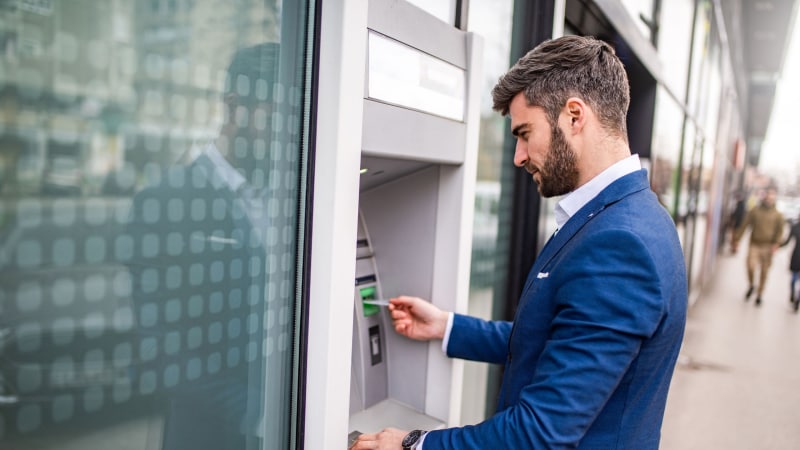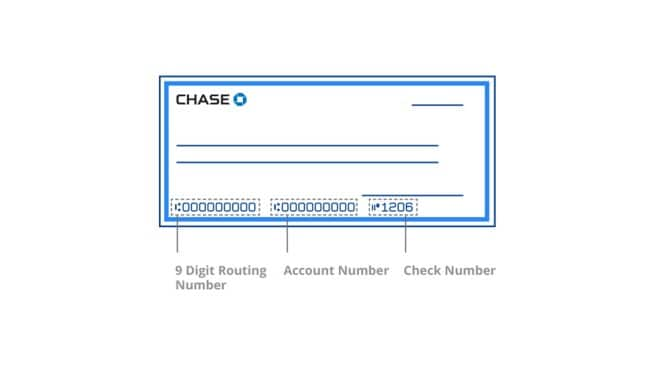Benefits of having a checking account

With a checking account, you can deposit money, make transfers, write checks, withdraw cash, pay bills and take care of other banking transactions either in person at a branch, an ATM or online. There are several different types of checking accounts available to fit your needs, and most allow you to make unlimited transactions, while some even offer extra benefits, perks and conveniences.
There are a number of everyday benefits to having a checking account. You can typically open a checking account in-person at a branch or online. Many financial institutions allow you to use your account right away to store and spend money.
Checking account basics
Essentially, a checking account is used for day-to-day transactions. Checking accounts are held through a financial institution, like a traditional bank, online bank or credit union. With a regular checking account, you can deposit and withdraw money (either through the bank or an ATM), write checks, pay bills and make purchases using a debit card.
There are several different types of checking accounts, but here are a few ways you can use one in your day-to-day life:
Deposit your money
Checking accounts provide a convenient and safe place to put your deposits. You can deposit money in person at a physical location or at an ATM. Many banks also have a mobile app that you can download to manage your money and make deposits into your checking account. Typically, banking apps accept deposits from checks, as well as funds transferred from other bank accounts or other people.
Withdraw your money
You can withdraw money through an ATM or in-person. For some accounts, there is no limit to how often you can withdraw money, or how much of your money you can take out at one time. There could be limits on the amount of withdrawals depending on the type of account or the method used to make the withdrawal, such as ATM limits.
Use a debit card
A debit card is linked to your checking account. When you use your debit card to purchase something at a store or online, those funds come directly out of your checking account. You can even use your debit card to withdraw cash at an ATM. Typically, you’ll receive your debit card 7-14 business days after opening your account, and once activated, it’s ready to use.
Write checks
With most (but not all) checking accounts, you can write checks as a form of payment from the funds in your account.
Direct deposit your paychecks
Direct deposit is a way to transfer your paychecks directly to your checking account without having to go to the bank or an ATM. In some cases, you may be able to split your paycheck and route those dollars to multiple bank accounts. For example, you may want to send 10% to a savings account and 90% to a checking account. You can set up direct deposit by filling out an authorization form with your employer.
Pros & cons of a checking account
There are a number of advantages to having a traditional checking account. Here are some to consider.
Accessibility. With a checking account, you have access to your funds through a variety of ways. You can withdraw funds in-person or at an ATM using your debit card. Or, you can access your funds to make purchases with your debit card or with checks. You can transfer funds in and out of your account online or through a mobile app. In addition, you can set up automatic payments through your account to automatically pay bills each month.
Peace of mind. When you have a checking account, there’s less of a need to carry around cash or keep it in a shoebox in your closet. Storing cash at home poses many risks, including lost to theft, fires or other natural disasters. Plus, it can be easy to lose track of how much you’re spending. With a checking account, you can keep track of funds coming in and going out of the account.
FDIC Insurance. In addition, most checking accounts held by traditional banks are insured by the Federal Deposit Insurance Corporation (FDIC). The FDIC protects your money in deposit accounts up to the maximum allowable amount in the event the bank fails. In the event of a bank failure, the FDIC works to find another financial institution to buy the failed bank and your FDIC insured deposits are simply transferred to this acquiring bank. If the FDIC cannot find a buyer for the bank, they will send you a check for the amount you had in your account up to the maximum amount allowed by law.
You don’t have to do anything to be eligible for this FDIC insurance. As long as your deposits are held by an FDIC member bank, you’re automatically covered with FDIC insurance.
Convenience of direct deposit. Many financial institutions enable you to set up direct deposit of your paycheck with your employer. You don’t have to wait for a paper check, and instead can have your paycheck automatically deposited into your account each pay period.
Plus, instead of having to go to the bank to deposit a traditional check, with direct deposit your funds may be immediately available to use.
Potential interest. Certain types of checking accounts earn interest, depending on the balance. With this type of checking account your money can grow simply by being in the account. It’s important to keep in mind that most checking accounts do not earn interest.
Cons of a checking account
While it’s a good idea to have a checking account to store your funds, there are some potential downsides.
Not likely to earn interest. As mentioned above, some checking accounts are interest-bearing, but most are not. This is because the funds in a checking account are typically treated like cash and are used for everyday transactions, not intended to sit for long periods of time. If growing your funds is important, you may want to consider opening a savings account in addition to your checking account.
Potential fees. Most checking accounts have fees that you may incur. Some checking accounts have monthly service and other fees that may include out of network ATM fees or overdraft fees (if you spend more money than what is in your account). Some checking accounts have monthly service fees, which may or may not be waived.
Minimum deposit. Some accounts require you to make a minimum deposit to open. This could be a downside to a checking account because you’ll have to make your first deposit right away.
Withdrawal limits. Depending on the bank and type of account, you may have ATM withdrawal limits or daily debit purchase limits. This can be a downside if you need more cash on hand or to make a larger purchase with your debit card.
In summary
A checking account may play an important role when it comes to managing your finances. A checking account can give you a central location to conduct your day-to-day financial activity. While you may find it helpful to utilize the features of a checking account — including access to a debit card, direct deposit and automatic payments — there are other considerations to be aware of. Depending on the type of checking account, you may incur various fees, have withdrawal limits and require a minimum deposit.



